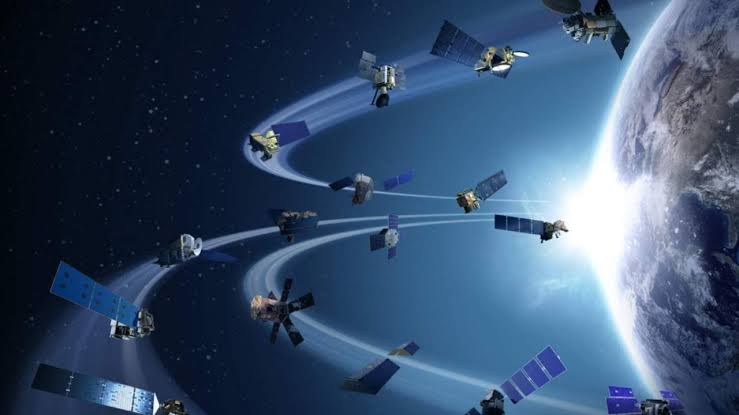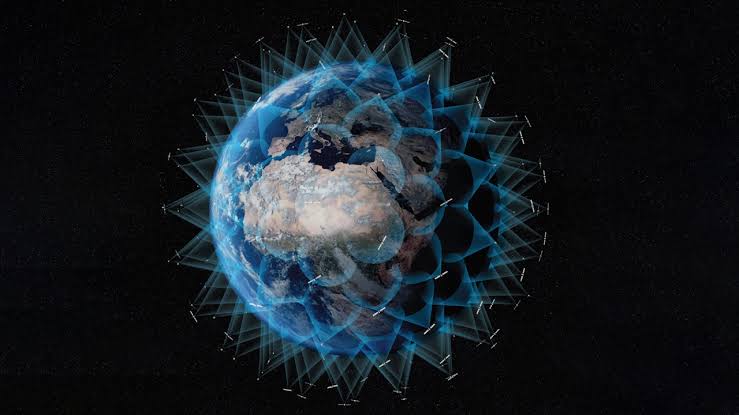Starlink, a satellite internet constellation developed by SpaceX, the aerospace company founded by Elon Musk has the potential to revolutionize internet connectivity by providing high-speed services to remote and underserved areas. But, what is Starlink’s impact on Astronomy?
As the deployment and usage of the Starlink constellation continue, its true impact on the global digital landscape becomes more apparent. It has raised concerns due to the potential Starlink’s impact on Astronomy and the night sky.
WHAT ARE STARLINK SATELLITES?

Starlink satellites are part of SpaceX’s Starlink project, which aims to create a global satellite internet constellation. These satellites are small, low Earth orbit (LEO) satellites designed to provide high-speed, low-latency internet access to users around the world.
Related: What are the Advantages and Disadvantages of Starlink?
STARLINK’S IMPACT ON ASTRONOMY
Starlink, SpaceX’s ambitious satellite internet project, has sparked significant discussions within the astronomy community due to concerns about its potential impact on astronomical observations and the night sky.
1. Satellite Trails and Light Pollution:
Starlink satellites, when illuminated by the Sun, can appear as bright moving dots in the night sky, leaving visible trails. These trails can interfere with astronomical observations and astrophotography, potentially ruining long-exposure images of celestial objects.
2. Impact on Observations:
Astronomers rely on sensitive telescopes and instruments to study distant objects in the universe. The presence of bright satellite trails can affect observations by introducing unwanted artifacts and reducing the quality of data collected.
3. Optical and Radio Interference:
The radio signals transmitted and received by Starlink satellites can introduce radio frequency interference that could interfere with radio astronomy observations, affecting research in radio wavelengths.
4. Challenges for Survey Telescopes:
Large sky surveys that cover vast areas of the sky in a short time could be particularly affected by a large number of Starlink satellites. These surveys are crucial for discovering transient phenomena and mapping the universe.
5. Dark and Quiet Skies:
The proliferation of bright satellites could threaten the natural beauty of the night sky. Preserving dark and quiet skies is essential for astronomical research and maintaining humanity’s connection to the cosmos.
HOW DO STARLINK SATELLITES WORK?
Starlink satellites works to provide global satellite-based internet coverage. The system involves a complex interplay of satellites in low Earth orbit (LEO), user terminals on the ground, and ground-based infrastructure.
1. Satellite Constellation:
SpaceX deploys thousands of small satellites in low Earth orbit. These satellites operate in a coordinated manner which creates a network that covers the entire globe.
2. User Terminals:
Users on the ground access the Starlink network through user terminals, commonly referred to as satellite dishes. These dishes are equipped with phased array antennas that can electronically steer their communication beams to establish a connection with passing satellites.
3. Satellite Communication:
Each satellite in the constellation has multiple high-frequency antennas to communicate with both user terminals and other satellites in the network.
4. Inter-Satellite Links:
Starlink satellites are equipped with laser communication links (inter-satellite links) that enable them to communicate with neighboring satellites.
5. Ground Stations:
Ground stations are strategically located facilities on Earth that are equipped with large antennas to communicate with the satellites. They act as gateways between the satellite network and the terrestrial internet infrastructure.
6. Internet Connectivity:
The ground station communicates with terrestrial internet infrastructure, which is connected to the broader internet. This connection provides access to online services, websites, and content.
7. Dynamic Tracking:
As the satellites orbit the Earth, the user terminal’s phased array antenna continuously adjusts its orientation to stay connected with the passing satellites. This dynamic tracking allows for a stable and consistent internet connection.
8. Low Latency:
The relatively low altitude of the satellites in LEO contributes to low latency, making real-time applications like video conferencing, online gaming, and web browsing smoother and more responsive compared to traditional geostationary satellites.
THE HISTORY OF STARLINK SATELLITES
2015-2018: Early Concept
In 2015, SpaceX publicly announced plans for the Starlink project with the goal of providing global satellite-based internet coverage.
2018-2019: Prototype Launches and Regulatory Approvals
Throughout 2018 and 2019, SpaceX continued to develop and refine its satellite design, focusing on a variety of features- size, weight, and performance.
2019-2020: Starlink V1.0 Launches Begin
Over the course of 2019 and 2020, SpaceX conducted several more launches, each carrying a batch of 60 satellites. These launches aimed to establish the initial elements of the Starlink constellation.
2020-2021: Expansion
SpaceX initiated a public beta program called “Better Than Nothing Beta” in late 2020, providing selected users with access to the Starlink service to test its performance and provide feedback.
2021-Present: Continued Deployment and Improvements
- SpaceX launched multiple batches of Starlink satellites throughout 2021 and into 2022, with a focus on expanding coverage and improving service quality.
- Improvements have also been made to its user terminals, which are the ground-based dishes that connect to the satellites to provide internet access.
CONCLUSION
In summary, Starlink satellites have prompted discussions and concerns among astronomers about the potential Starlink’s impact on Astronomy. While efforts are being made to mitigate these issues,Ongoing collaboration between the satellite industry and the astronomy community is crucial to find long-lasting solutions.
We hope that you have liked this article based on Starlink’s Impact on Astronomy.
